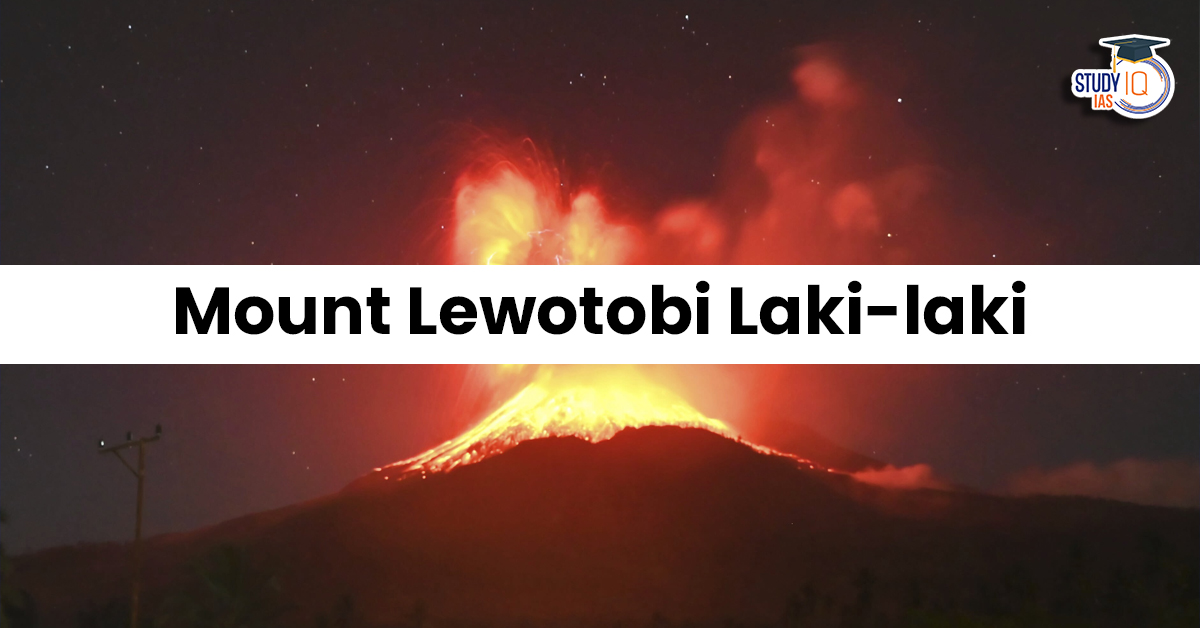Table of Contents
Indonesia’s Mount Lewotobi Laki-Laki, located on Flores Island, has erupted once again, sending towering plumes of ash high into the sky and prompting authorities to issue evacuation warnings.
This recent activity highlights Indonesia’s volatile position on the Pacific Ring of Fire, where powerful geological forces frequently trigger earthquakes and volcanic eruptions.
Recent News: Mount Lewotobi Laki-Laki Erupts
On October 15, 2025, Indonesia’s Mount Lewotobi Laki-Laki erupted violently, spewing ash up to 10 kilometres into the atmosphere. The eruption led authorities to raise the alert level to its highest stage, with nearby residents advised to stay outside a 6-kilometre radius.
This follows earlier eruptions in July 2025, when ash plumes reached nearly 18 kilometres high, disrupting air travel and forcing temporary evacuations.
The Center for Volcanology and Geological Hazard Mitigation (PVMBG) continues to monitor the site, warning of possible pyroclastic flows and ashfall over nearby settlements.
About Mount Lewotobi Laki-Laki
-
Location: Flores Island, East Nusa Tenggara, southeastern Indonesia.
-
Volcano Complex: It forms part of the Lewotobi twin volcano system, consisting of:
-
Lewotobi Laki-Laki (Male Volcano)
-
Lewotobi Perempuan (Female Volcano)
-
-
Elevation: Approximately 1,584 metres (5,197 ft).
The Male Volcano (Laki-Laki) is historically the more active of the two and is responsible for multiple recorded eruptions throughout Indonesia’s modern history.
What is a Stratovolcano?
Stratovolcanoes, also called composite volcanoes, are steep-sided mountains built from alternating layers of lava, ash, and pyroclastic debris.
They are known for:
-
Explosive eruptions due to high-viscosity magma.
-
Steep, conical profiles with crater vents.
-
Lava domes and ash columns forming after major explosions.
Mount Lewotobi Laki-Laki is a classic stratovolcano, similar in structure to Mount Merapi (Indonesia) or Mount Fuji (Japan).
Indonesia: Land of Volcanoes
Indonesia has the highest number of volcanoes in the world, making it a global hotspot for volcanic activity.
Key Facts
-
Total volcanoes: 126
-
Active volcanoes: 120
-
Submarine volcanoes: 6
-
Most volcanoes lie along: The Sunda Arc, a 3,000 km-long chain stretching from Sumatra to the Banda Sea.
-
Geological Cause: Subduction of the Indian Ocean Plate beneath the Eurasian (Asian) Plate.
This tectonic interaction fuels Indonesia’s frequent eruptions and seismic events, creating both fertile lands and natural hazards.
Impact of the 2025 Eruption
The October 2025 eruption has caused:
-
Heavy ashfall on nearby villages, reducing visibility and affecting crops.
-
Flight cancellations due to volcanic ash in air routes.
-
Temporary displacement of residents near the base of the volcano.
-
Ongoing risk of pyroclastic flows and lahars (mudflows) due to rainfall mixing with ash.
Local authorities and the Indonesian National Disaster Mitigation Agency (BNPB) have been coordinating evacuations and issuing real-time alerts.
Geological Significance
Mount Lewotobi’s activity is part of a broader pattern of volcanic unrest seen across the Indonesian archipelago.
Its eruptions provide valuable data for scientists studying:
-
Magma chamber evolution in twin volcano systems.
-
Volcanic gas emissions and their climatic impacts.
-
Predictive modelling for early-warning systems.
Why Indonesia Faces Frequent Eruptions
Indonesia sits on the Pacific Ring of Fire, an arc of intense seismic activity where multiple tectonic plates — including the Eurasian, Indo-Australian, and Pacific Plates — collide and overlap.
This leads to:
-
High magma generation.
-
Frequent earthquakes and volcanic activity.
-
Formation of stratovolcanoes and caldera systems across the islands.
Conclusion
The eruption of Mount Lewotobi Laki-Laki is another reminder of Indonesia’s dynamic geology and the fine balance between natural creation and destruction.
While such eruptions pose risks to life and infrastructure, they also enrich Indonesia’s soils and shape its diverse landscape.
Continuous monitoring, community awareness, and global cooperation in volcanic research and disaster management remain key to reducing the risks associated with these natural events.


 UNEP Champions of the Earth Award: UN's ...
UNEP Champions of the Earth Award: UN's ...
 Shilp Didi Programme: Empowering Women A...
Shilp Didi Programme: Empowering Women A...
 Is the Falling Rupee a Cause for Alarm?
Is the Falling Rupee a Cause for Alarm?

























